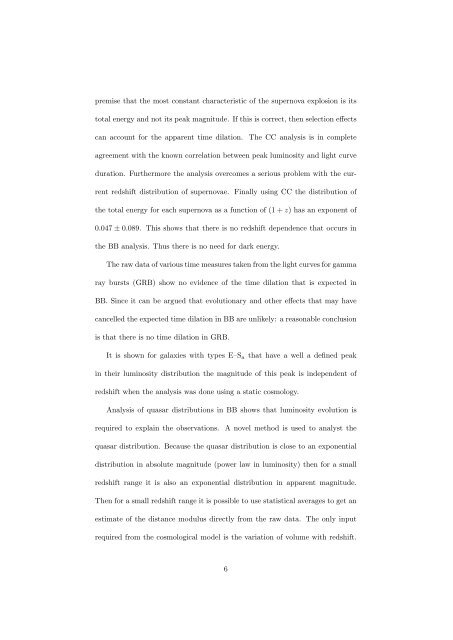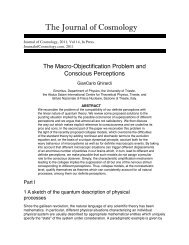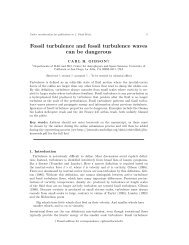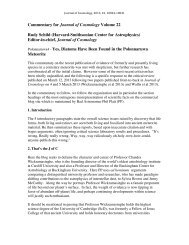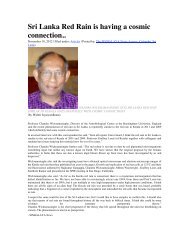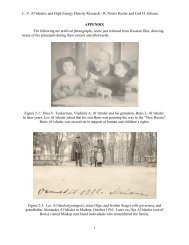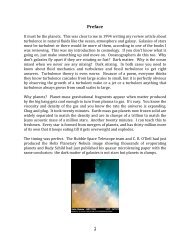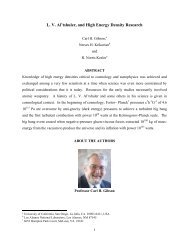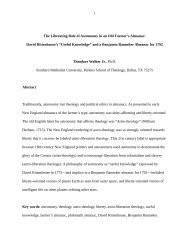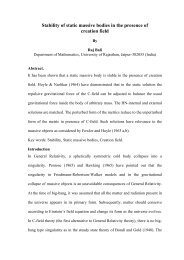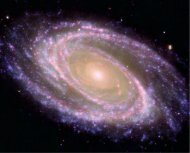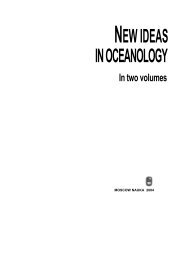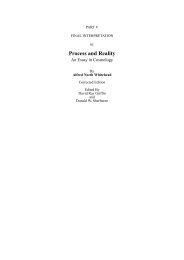Observational Evidence Favors a Static Universe - Journal of ...
Observational Evidence Favors a Static Universe - Journal of ...
Observational Evidence Favors a Static Universe - Journal of ...
You also want an ePaper? Increase the reach of your titles
YUMPU automatically turns print PDFs into web optimized ePapers that Google loves.
premise that the most constant characteristic <strong>of</strong> the supernova explosion is its<br />
total energy and not its peak magnitude. If this is correct, then selection effects<br />
can account for the apparent time dilation. The CC analysis is in complete<br />
agreement with the known correlation between peak luminosity and light curve<br />
duration. Furthermore the analysis overcomes a serious problem with the cur-<br />
rent redshift distribution <strong>of</strong> supernovae. Finally using CC the distribution <strong>of</strong><br />
the total energy for each supernova as a function <strong>of</strong> (1 + z) has an exponent <strong>of</strong><br />
0.047 ± 0.089. This shows that there is no redshift dependence that occurs in<br />
the BB analysis. Thus there is no need for dark energy.<br />
The raw data <strong>of</strong> various time measures taken from the light curves for gamma<br />
ray bursts (GRB) show no evidence <strong>of</strong> the time dilation that is expected in<br />
BB. Since it can be argued that evolutionary and other effects that may have<br />
cancelled the expected time dilation in BB are unlikely: a reasonable conclusion<br />
is that there is no time dilation in GRB.<br />
It is shown for galaxies with types E–Sa that have a well a defined peak<br />
in their luminosity distribution the magnitude <strong>of</strong> this peak is independent <strong>of</strong><br />
redshift when the analysis was done using a static cosmology.<br />
Analysis <strong>of</strong> quasar distributions in BB shows that luminosity evolution is<br />
required to explain the observations. A novel method is used to analyst the<br />
quasar distribution. Because the quasar distribution is close to an exponential<br />
distribution in absolute magnitude (power law in luminosity) then for a small<br />
redshift range it is also an exponential distribution in apparent magnitude.<br />
Then for a small redshift range it is possible to use statistical averages to get an<br />
estimate <strong>of</strong> the distance modulus directly from the raw data. The only input<br />
required from the cosmological model is the variation <strong>of</strong> volume with redshift.<br />
6


